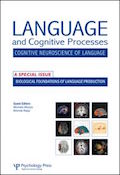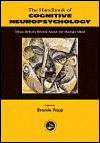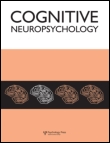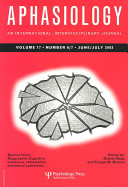Books and Special Issues
Rapp, B. & McCloskey, M. (2017). Developmental Dysgraphia and the Acquisition of Spelling and Writing. Special Issue of Cognitive Neuropsychology. Rutledge.
Nickels, L. Kohnen, S. and Rapp, B. (Eds). (2015). Treatment as a tool for investigating cognition. Special Issue of Cognitive Neuropsychology; 32 (3/4).
Rapp, B. (2011). (Ed.) Case Series in Cognitive Neuropsychology. Special Issue of Cognitive Neuropsychology.
 Miozzo, M. & Rapp, B. (2011). The Neural Bases of Language Production. Special Issue of Language and Cognitive Processes.
Miozzo, M. & Rapp, B. (2011). The Neural Bases of Language Production. Special Issue of Language and Cognitive Processes.
Rapp, B. & Beeson, P. (Eds). (2003). Dysgraphia; Cognitive Processes, Remediation and Neural Substrates. Special Issue of Aphasiology.
Rapp, B. (Ed.) (2001). What Deficits Reveal about the Human Mind/Brain: A Handbook of Cognitive  Neuropsychology. Philadelphia: Psychology Press.
Neuropsychology. Philadelphia: Psychology Press.
Articles and Chapters
2020
Bhattacharjee, S., Kashyap, R., O’Brien,B.A, McCloskey, M., Oishi,K., Desmond, J., Rapp, B., Chen, A. (2020). Reading Proficiency Influences the effects of Transcranial Direct Current Stimulation: Evidence from Selective Modulation of Dorsal and Ventral Pathways of reading in Bilinguals. Brain and Language, 210, 104850.
Tao, Y., Ficek, B., Rapp, B. & Tsapkini, K. (in press). Different patterns of functional network re-organization across the variants of primary progressive aphasia: A graph theoretic analysis. Neurobiology of Aging.
Themistocleous, D. Neophytou, K. Rapp, B. & Tsapkini, K. (in press). A tool for automatic scoring of spelling performance. Journal of Speech, Language and Hearing Research.
Shea, J., Wiley, R., Moss, N., Rapp, B. (in press). Pseudoword spelling ability predicts response to word spelling treatment in acquired dysgraphia. Neuropsychological Rehabilitation.
Tao, Y. & Rapp, B. (2020). How functional network connectivity changes as a result of lesion and recovery: An investigation of the network phenotype of stroke. Cortex, 131, 17-41.
Higgins, J., Barbieri, E., Wang, X., Mack, J., Caplan, D., Kiran, S., Rapp, B., Thompson, C, Zinbarg, R., Parrish, T. (2020). Reliability of BOLD signals in chronic stroke-induced aphasia. European Journal of Neuroscience. https://doi.org/10.1111/ejn.14739
Martin, R., Rapp, B. & Purcell, J. (in press). Domain-specific working memory: Perspectives from cognitive neuropsychology. In R.H. Logie, V. Camos, and N. Cowan (Eds.), Working Memory: State of the Science. Oxford, UK: Oxford University Press.
de Aguiar, V., Zhao, Y, Ficek, B.N., Webster, K. Rofes, A., Wendt, H., Frangakis, C. Caffo, B., Hillis, A. Rapp, B., Tsapkini, K. (2020). Cognitive, language and treatment parameters predict effects of spelling intervention in primary progressive aphasia. Cortex, 124, 66-84.
2019
Ellenblum, G., Purcell, J. J., Song, X., & Rapp, B. (2019). High-level Integrative Networks: A Resting-state fMRI Investigation of Reading and Spelling. Journal of Cognitive Neuroscience, 1-17. supplementary material
Purcell, J., Wiley, R., & Rapp, B. (2019). Re-learning to be different: Increased neural differentiation supports post-stroke language recovery. NeuroImage, 202, 116145. doi: 10.1016/j.neuroimage.2019.116145
Tao, Y. & Rapp, B. (2019). The effects of lesion and treatment-related recovery on functional network modularity in post-stroke dysgraphia. NeuroImage Clinical, 23, 101865.
Wiley, R. & Rapp, B. (2019). From complexity to distinctiveness: The effect of expertise on letter perception. Psychonomic Bulletin and Review, 26 (3), 974-984.
Rapp, B. (2019). Disgrafia: Bases neurales y cognitivas. In, E. Labos & J.L. Nespoulous (Eds.), Neuropsicolinguistica: Recorrido clinic, elementos conceptuales y perspectivas. Editorial Akadia, Buenos Aires.
Wiley, R. & Rapp, B. (2019). Statistical analysis in small-n designs: Using linear mixed-effects modeling for evaluating intervention effectiveness. Aphasiology, 33:1, 1-30.
Rofes, A., Mandonnet, E., de Aguiar, V., Rapp, B., Tsapkini, K., Miceli, G. (2019). Language processing from the perspective of electrical stimulation mapping. Cognitive Neuropsychology, 36, 3-4, 117-139.
Bhattacharjee, S., Kashyap, R., Rapp, B., Oishi, K., Desmond, J. E., & Chen, S. A. (2019). Simulation Analyses of tDcS Montages for the investigation of Dorsal and Ventral pathways. Scientific reports, 9(1), 1-17.
Neophytou, K., Wiley, R., Rapp, B., Tsapkini, K. (2019). The use of spelling for variant classification in Primary Progressive Aphasia: Theoretical and practical implications. Neuropsychologia, 107157.
Rapp, B. & Wiley, R. (2019). Re-learning and remembering in the lesioned brain. Neuropsychologia, 132, 107126.
2018
Tsapkini, K., Webster, K.T., Ficek, B.N., Desmond, J.E., Onyike, C.U., Rapp, B., Frangakis, C.E., Hillis, A.E. (2018). Electrical brain-stimulation in different variants of primary progressive aphasia: a randomized clinical trial. Alzheimer’s & Dementia; Translational Research and Clinical Interventions.
Breining, B., Nozari, B & Rapp, B. (2018). Learning in complex, multi-component cognitive systems: Different learning challenges within the same system. Journal of Experimental Psychology: Learning, Memory and Cognition.
Purcell, J. J., & Rapp, B. (2018). Local response heterogeneity indexes experience-based neural differentiation in reading. NeuroImage, 183, 200-211.
Rapp, B. & Purcell, J. (2018). Understanding how we produce written words: Lessons from the brain. In, De Zubicaray, G. and Schiller, N.O. (Eds.) Oxford Handbook of Neurolinguistics. Oxford University Press.
Rapp, B. (in press). Writing research in the 21st century. In, C. Perret and T. Olive (Eds.), Writing words: Psychological and neuropsychological approaches. Leiden: Brill.
2017
McCloskey, M., & Rapp, B. (2017). Developmental dysgraphia: An overview and framework for research. Cognitive neuropsychology, 34(3-4), 65-82.
Hepner, C., McCloskey, M., & Rapp, B. (2017). Do reading and spelling share orthographic representations? Evidence from developmental dysgraphia. Cognitive neuropsychology, 34(3-4), 119-143.
Rothlein, D., & Rapp, B. (2017). The role of allograph representations in font-invariant letter identification. Journal of Experimental Psychology: Human Perception and Performance.
Breining, B., & Rapp, B. (2017). Investigating the mechanisms of written word production: Insights from the written blocked cyclic naming paradigm. Reading and Writing, 1-30.
Lukic, S., Barbieri, E., Wang, X., Caplan, D., Kiran, S., Rapp, B., Parrish, T., & Thompson, C. K. (2017). Right Hemisphere Grey Matter Volume and Language Recovery in Stroke Aphasia. Neural Plasticity, 2017, 1-14.
Thompson, C.K., Walenski, M., Chen, Y.F., Caplan, D., Kiran, S., Rapp, B., Grunewald, K., Nunez, M., Zinbarg, R.E., & Parrish, T.B. (2017). Intrahemispheric perfusion in chronic stroke-induced aphasia. Neural Plasticity, 2017, 1-15.
Tsapkini, K., Webster, K., Ficek, B. N., Desmond, J., Onyike, C., Rapp, B., … & Hillis, A. E. (2017). Transcranial direct current stimulation in primary progressive aphasia: Whom does it help?. Brain Stimulation: Basic, Translational, and Clinical Research in Neuromodulation, 10(4), e40.
Purcell, J. & Rapp, B. (2017). Disorders of written expression. Wenzel, A. (Ed.). In, Encyclopedia of Abnormal and Clinical Psychology. Thousand Oaks, CA: SAGE Publications.
2016
Nozari, N., Freund, M., Breining, B., Rapp, B., & Gordon, B. (2016). Cognitive control during selection and repair in word production. Language, Cognition and Neuroscience, 31(7), 886-903.
Rapp, B., Purcell, J., Hillis, A., Capasso, R., & Miceli, G. (2016). Neural bases of orthographic working memory and long-term memory: Evidence from acquired dysgraphia. Brain, 139(2), 588-604.
Wiley, R., Wilson, C. & Rapp, B. (2016). The effects of alphabet and expertise on letter perception. Journal of Experimental Psychology: Human Perception and Performance, 42(8), 1186.
2015
Breining, B., Nozari, N., & Rapp, B. (2015). Does segmental overlap help or hurt? Evidence from blocked cyclic naming in spoken and written production. Psychonomic bulletin & review, 1-7.
Nickels, L. Rapp, B. & Kohnen, S. (2015). Challenges in the use of treatment to investigate cognition. Cognitive Neuropsychology, 32 (3/4), 91-104.
Rapp, B., Fischer-Baum, S., & Miozzo, M. (2015). Modality and Morphology What We Write May Not Be What We Say. Psychological science, 26(6), 892-902.
Rapp, B., Purcell, J., Hillis, A. E., Capasso, R., & Miceli, G. (2015). Neural bases of orthographic long-term memory and working memory in dysgraphia. Brain: a journal of neurology.
Rothlein, D., & Rapp, B. (2015). Behavioral and neural evidence of stored letter shape and abstract letter identity representations. Journal of vision, 15(12), 913-913.
Rapp, B. & Fischer-Baum, S. (2015). Uncovering the cognitive architecture of spelling. In A. Hillis (Ed.), Handbook of Adult Language Disorders: integrating Cognitive Neuropsychology, Neurology and Rehabilitation; Second Edition. Philadelphia: Psychology Press.
2014
Rapp, B., & Fischer-Baum, S. (2014). Representation of Orthographic Knowledge. The Oxford Handbook of Language Production, 338.
Purcell, J. J., Shea, J., & Rapp, B. (2014). Beyond the visual word form area: The orthography–semantics interface in spelling and reading. Cognitive neuropsychology, 31(5-6), 482-510.
Rothlein, D. & Rapp, B. (2014) The similarity structure of distributed neural responses reveals the multiple representations of letters. Neuroimage, 89:331-44. PubMed PMID: 24321558
Rapp, B., Buchwald, A., & Goldrick, M. (2014). Integrating accounts of speech production: The devil is in the representational details. Language, Cognition and Neuroscience, 29(1), 24-27.
Fischer-Baum, S., & Rapp, B. (2014). The analysis of perseverations in acquired dysgraphia reveals the internal structure of orthographic representations. Cognitive neuropsychology, 31(3), 237-265.
Miozzo, M., Rawlins, K., & Rapp, B. (2014). How verbs and non-verbal categories navigate the syntax/semantics interface: Insights from cognitive neuropsychology. Cognition, 133(3), 621-640.
Medina, J., & Rapp, B. (2014). Rapid experience-dependent plasticity following somatosensory damage. Current Biology, 24(6), 677-680.
Medina, J., McCloskey, M., Coslett, H., & Rapp, B. (2014). Somatotopic representation of location: Evidence from the Simon effect. Journal of Experimental Psychology: Human Perception and Performance, 40(6), 2131.
2013
Rothlein, D., & Rapp, B. (2013). The similarity structure of distributed neural responses reveals abstract and modality-specific representations of letters. Journal of Vision, 13(9), 786-786.
Tainturier, M. J., Bosse, M. L., Roberts, D. J., Valdois, S., & Rapp, B. (2013). Lexical neighborhood effects in pseudoword spelling. Frontiers in psychology, doi-10.
Purcell, J. J., & Rapp, B. (2013). Identifying functional reorganization of spelling networks: an individual peak probability comparison approach. Frontiers in psychology, 4.
Dufor, O. & Rapp, B. (2013). Letter representations in writing: an fMRI adaptation approach. Frontiers in Cognitive Science, doi: 10.3389/fpsyg.2013.00781
Rapp, B., Buchwald, A. & Goldrick, M. (2013). Integrating accounts of speech production: The devil is in the representational details. Language, Cognition and Neuroscience. DOI:10.1080/01690965.2013.848991
Cohen-Goldberg, A.M. Cholin, J. Miozzo, M., Rapp, B. (2013) The interface between morphology and phonology: Exploring a morpho-phonological deficit in spoken production. Cognition, 2, 270-286.
Yoshioka, T. Dillon, M. R., Beck, G.C., Rapp, B., & Landau, B. (2013). Tactile localization on digits and hand: Structure and Development. Psychological Science, 24(9), 1653-1663.
Rapp, B., Caplan, D., Edwards, S., Visch-Brink, E., & Thompson, C.K. (2013). Neuroimaging in aphasia treatment research: Issues of experimental design for relating cognitive to neural changes. Neuroimage, 75, 200-207.


